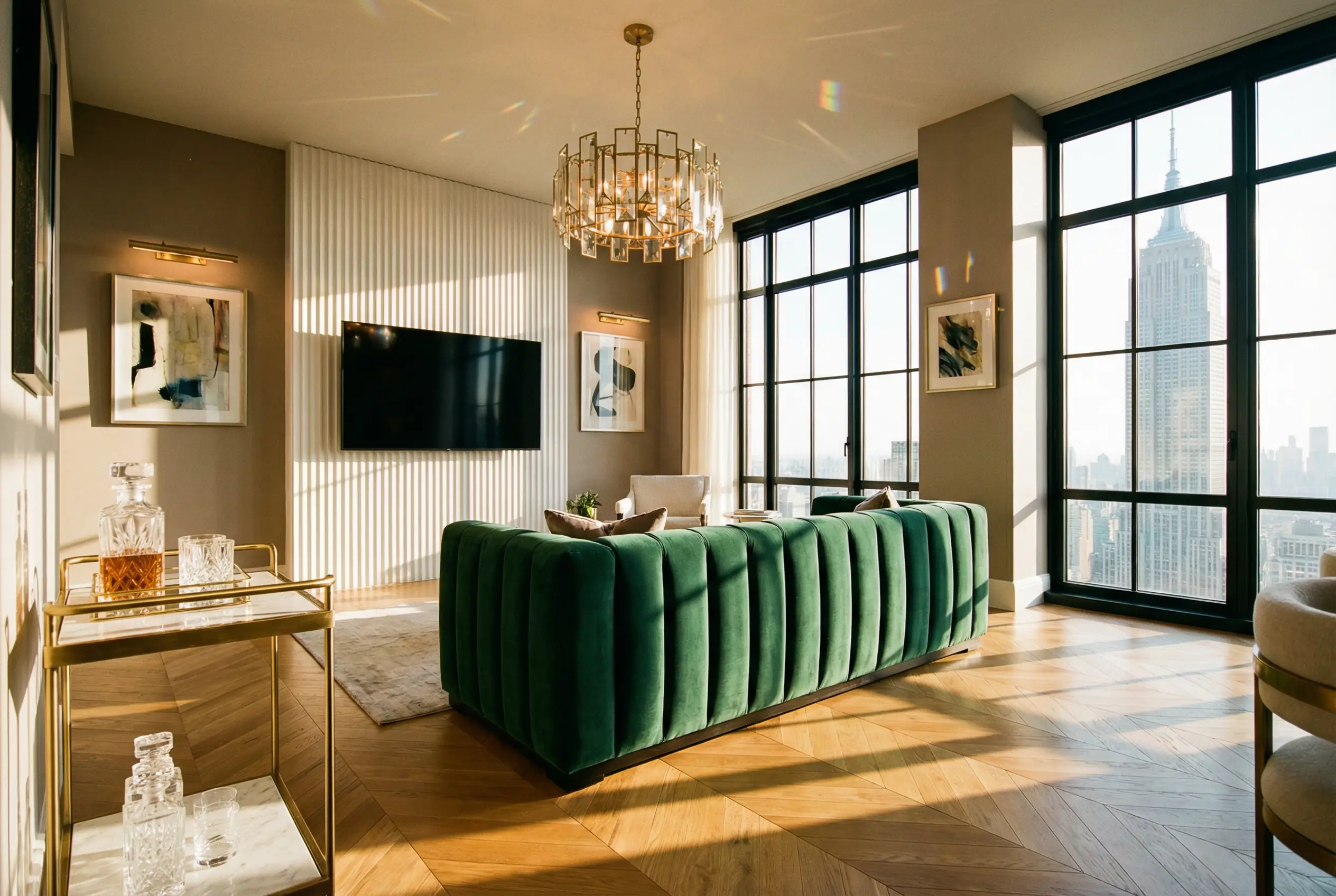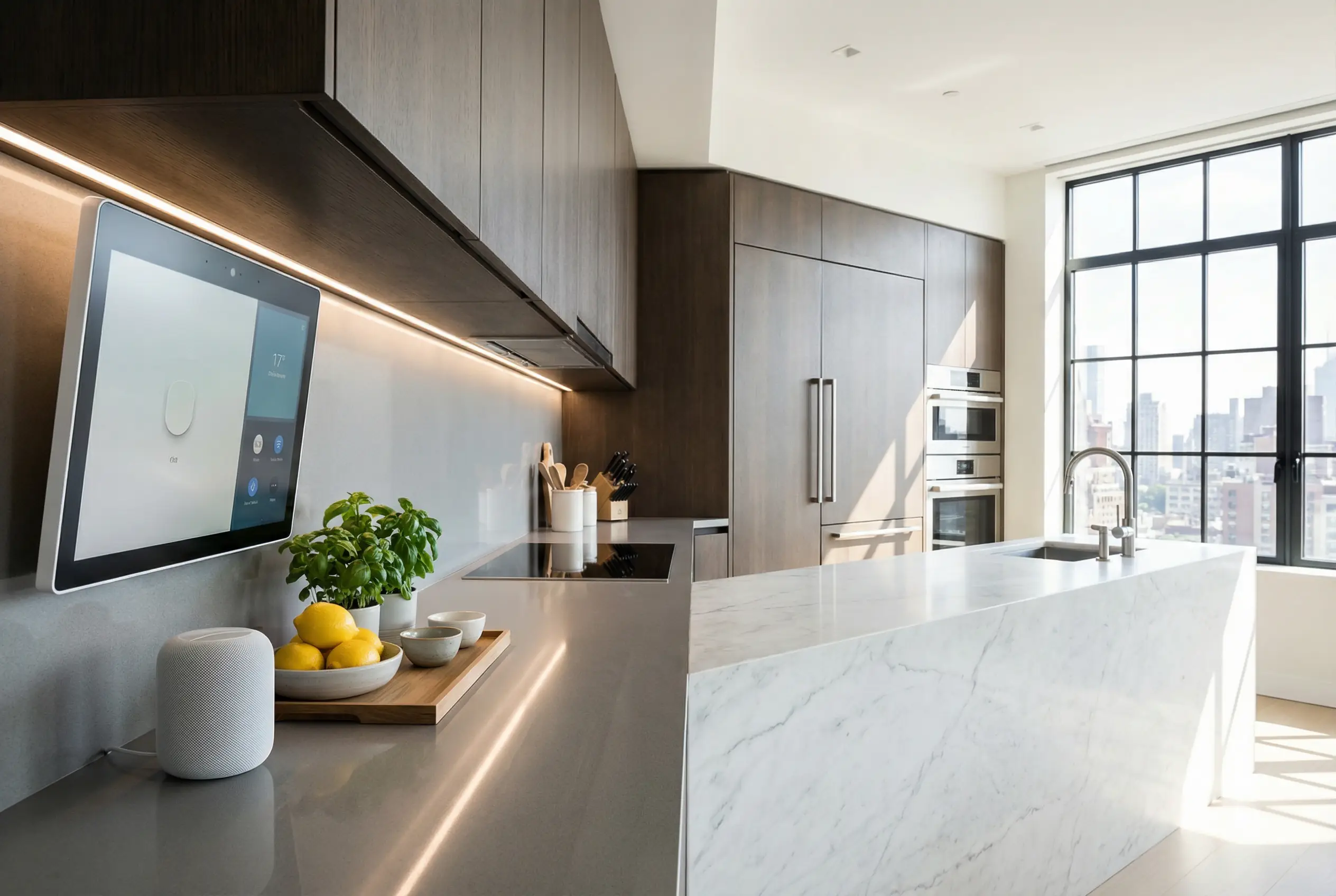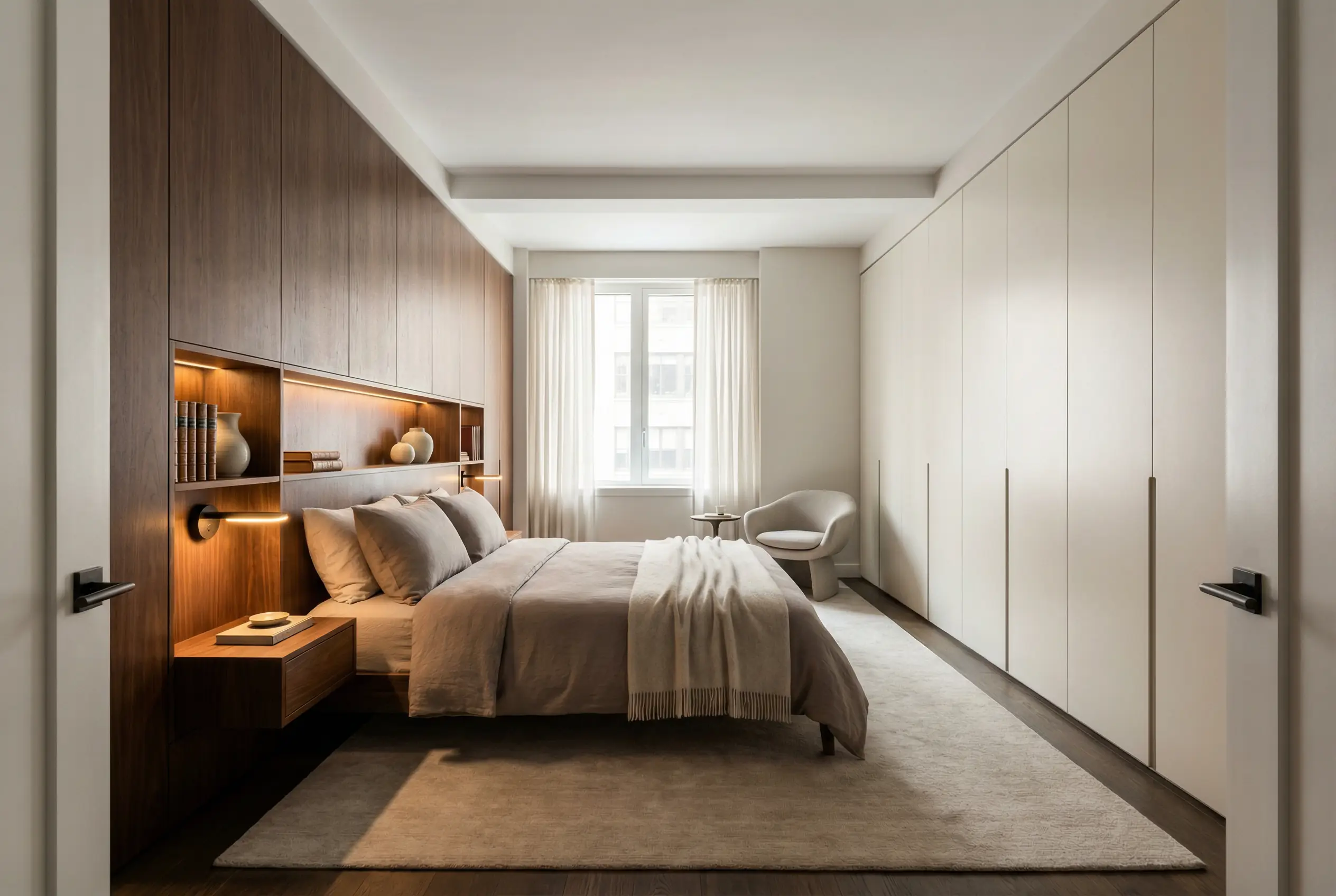Transform Your Manhattan Home: 7 Steps to Smart Automation
In today’s rapidly advancing technological era the concept of a smart home system is not just a luxury but a seamless integration of convenience and security into everyday living. Transitioning your house into a smart home with advanced smart home technology provides a multitude of benefits, transformative experience. Enabling control over security cameras, smart lighting, and much more, directly from your smartphone, the importance of adopting smart home devices lies not only in the enhanced security they offer through smart home security systems but also in the efficiency and ease they bring into daily activities.
This ranges from automated temperature adjustments with smart thermostats to the convenience of smart plugs. This move towards smart house automation reflects a growing trend in home automation products and smart home products. Broader trend towards more connected and automated homes, marking a significant leap in how we interact with our living spaces.

An array of smart home devices, including a tablet with a control interface, speakers, a camera, and other sensors, arranged on a wooden table in a stylish living room with a sofa, TV, and large windows.
As you contemplate making a smart home, this article will guide you through essential steps starting with outlining your goals for automation and the selection of a compatible ecosystem and voice assistant. Understanding the technical requirements is crucial, such as ensuring a robust Wi-Fi and power supply, which are the backbone of any efficient smart home system.
Selecting your initial set of smart home devices—from connected devices for entertainment to smart home lighting systems for ambiance—sets the stage for a deeper exploration into the realm of home automation. Through setting up automation and integration, you'll discover how to synchronize your devices for a cohesive smart home control experience.
Each section of this guide offers practical advice and expert tips, setting you on the path to transforming your residence into a smart home tailored to your lifestyle and preferences, keeping up with the latest smart home trends.

Determine Your Smart Home Goals
To effectively set your smart home goals, consider employing the SMART criteria: Specific, Measurable, Attainable, Relevant, and Time-bound. Begin by identifying specific aspects of your home you wish to automate, such as installing smart thermostats or enhancing home security with smart cameras. Ensure these goals are measurable, for instance, by aiming to reduce energy consumption by a certain percentage using smart devices.

Next, assess the attainability of these goals. Choose upgrades that are realistic given your current technology and budget. It's also crucial to ensure that your goals align with your lifestyle needs, making them relevant. For instance, if privacy is a priority, focus on smart home devices that offer enhanced security features enhanced security features without compromising personal data.
Finally, set a clear timeline for achieving these goals. Whether it's upgrading your lighting system within six months or setting up a fully integrated smart home system within a year, having a time-bound plan will keep your project on track, while also considering data privacy concerns.
By following these steps, you'll create a structured approach to building your smart home system, tailored to enhance both efficiency and comfort in your daily life. If you're seeking professional assistance or need a customized solution, consider contacting KS Renovation Group, one of the leading smart home companies, for expert advice and a free quote.
Choose Your Ecosystem and Voice Assistant
When selecting a smart home ecosystem, the choice of voice assistant plays a crucial role, as it determines how seamlessly your devices will interact. Here's a breakdown of the leading options:
Amazon Alexa
Amazon Alexa stands out for its extensive device compatibility, supporting around 100,000 smart home devices. Alexa's Echo line, including the Echo Show with its interactive display, serves as a central hub, enhancing user experience by allowing easy control and integration of various smart devices. Alexa also offers personalization by recognizing different voices, providing a tailored experience for up to 10 users. However, it's essential to consider that Alexa might require quieter environments to recognize commands effectively, showcasing the capabilities of virtual assistants.
Google Assistant
Google Assistant is renowned for its superior voice recognition capabilities, supporting over 40 languages and various dialects. It excels in understanding and executing complex commands and is integrated with over 1 million actions. Google Assistant, far surpassing its competitors, tends to be more accommodating for those new to voice assistants or with strong accents.
Apple HomeKit
Apple's HomeKit focuses on security and reliability, offering a more closed but secure smart home operating system. It supports fewer devices compared to Alexa and Google Home but excels in privacy and data security. Siri, Apple’s voice assistant, is integrated into HomeKit, allowing control of devices with simple voice commands. Despite its limited compatibility, HomeKit remains a robust choice for those invested in Apple's ecosystem.
Choosing the right ecosystem depends on your specific needs, such as device compatibility, security preferences, and the importance of voice recognition accuracy. For expert guidance on customizing your smart home integration to fit your lifestyle, consider reaching out to KS Renovation Group for a free consultation.
Ensure Robust Wi-Fi and Power Supply
To ensure your smart home system operates smoothly, robust Wi-Fi coverage and reliable power outlets are critical. For Wi-Fi, the speed and range of your internet connection significantly affect the performance of your smart devices sluggish connection. Poor Wi-Fi coverage can lead to delays and frustration, much like driving on a congested highway. Consider upgrading to amesh Wi-Fi SystemMesh network for extensive coverage, especially if you have a large home. This system acts like a smooth highway, allowing seamless operation of your smart devices.

Regarding power supply, different receptacles serve various purposes. Standard 15 amp receptacles are suitable for charging devices and small appliances in living areas. For larger appliances, 20 amp receptacles are recommended, typically found in kitchens and garages. Safety is paramount, so installing Ground Fault Circuit Interrupter (GFCI) receptacles. Installing GFCI outlets in moisture-prone areas like kitchens and bathrooms is essential. These receptacles quickly cut off power to prevent electrical hazards.
If you're considering enhancing your smart home system or need professional advice on setup and safety, contact KS Renovation Group for expert guidance and a free quote.
Select and Install Your Initial Smart Devices
To initiate your smart home transformation, begin with smart speakers which act as the central hub. Depending on your preferred voice assistant—Alexa, Google Assistant, or Siri—select devices like the Echo Studio for Alexa users or Nest Audio for Google enthusiasts. These devices allow you to control other smart home gadgets with voice control through voice commands.

Next, enhance your living space with smart lighting. Options like the Wyze Bulb Color offer both voice and app control, making it easier to manage lighting without ever leaving your sofa. Smart bulbs not only provide convenience but also help save energy and reduce electricity bills.
For climate control, installing a smart thermostat like the Ecobee Smart Thermostat Premium can significantly improve energy efficiency. These smart home appliances allow remote monitoring and adjustments via phone or voice, making it simple to maintain the perfect home temperature reduce overall energy usage.
Remember, setting up these devices requires a stable Wi-Fi connection and possibly additional hubs for integration. For professional installation or to customize your smart home experience, consider reaching out to KS Renovation Group for a free consultation to ensure your smart grid is effectively integrated.
Set Up Automation and Integration
To effectively set up automation and integration in your smart home system, start by grouping devices to streamline control. Open the Alexa app, navigate to devices, and select the plus icon to add a group. Choose a name and add all relevant devices, saving the configuration to control them with a single command like, 'Alexa, turn on the front yard.' This grouping simplifies management, allowing you to activate or adjust multiple devices simultaneously, enhancing efficiency and convenience in your daily routine by adhering to home automation protocols.
Next, create routines and schedules to maximize the functionality of your grouped devices. Establish routines that trigger multiple activities with simple commands. For instance, saying 'Good morning' could turn on lights, play music, and start your coffee machine. Set these routines for specific times or activate them with voice commands to suit your schedule. Automated scenes can also be scheduled, such as opening blinds, adjusting temperatures, and starting appliances at predetermined times to align with your daily activities.
.webp)
Conclusion
Through this comprehensive journey into the world of smart home automation, we have explored the myriad ways in which integrating the latest technology can enhance the convenience, security, and efficiency of your living spaces. From outlining your smart home goals to selecting the right ecosystem, and from ensuring a robust Wi-Fi and power supply to installing and automating your smart devices, the steps provided offer a solid foundation for anyone looking to embark on making their home smarter. The transformation into a smart home is not just about upgrading your living space with technology; it's about crafting a personalized experience that aligns with your lifestyle and preferences, ultimately making your daily life more manageable and enjoyable with the help of IoT devices.
Reflecting on the importance of a smart home, it's evident that the journey towards automation doesn’t just stop with installation. It's an ongoing process of adapting and fine-tuning to ensure your home remains a true reflection of your needs and preferences. As you consider taking the next steps in your home automation journey, remember that professional guidance can make the process smoother and more customized. For those looking to delve deeper or requiring expert assistance in creating a smart home that perfectly aligns with their vision, consider reaching out to KS Renovation Group for a free consultation. Our expertise can help bridge the gap between your smart home aspirations and the reality, ensuring that your space is not just connected but truly smart with seamless home integration.
FAQs
What are the steps to create a smart home automation system?
To build a smart home automation system, begin by selecting a central control device such as Amazon Echo or Google Nest. Add smart lighting systems that you can manage via your smartphone, install programmable thermostats, and incorporate security features like cameras and smart locks. Include motion sensors that detect movement or changes in temperature, and use smart plugs that can be controlled remotely to manage your smart appliances.
How do I install a home automation system in Manhattan?
To install a home automation system, follow these steps:
- Evaluate your needs and decide what aspects of home automation are most important to you to determine the best smart home system for your lifestyle.
- Choose a central hub that will coordinate all your smart devices.
- Select compatible devices and systems that meet your requirements.
- Plan the installation process carefully.
- Install and configure each device according to manufacturer instructions.
- Test the system to ensure everything is working correctly and troubleshoot any issues.
What is the typical cost to install a smart home system in Manhattan?
The cost to install a smart home systems varies widely, typically ranging from $2,000 to $6,000. On average, most homeowners spend about $4,000 to automate their home with a mid-range security system, a smart speaker, a thermostat, and a smart doorbell as part of a comprehensive home automation package.
What distinguishes a smart home from a home automation system?
The key difference between a smart home and home automation is in their operational frameworks. Smart home devices communicate with a central server, like those provided by Amazon or Google, to send and receive data. In contrast, home automation systems manage the home's functions through a central unit and direct actuators installed within the home, allowing for more integrated control without relying on external data handling. This makes automated home systems more efficient, especially when using advanced home automation equipment.

KS Renovation Blog
Get Inspired
Meaningful information about home remodeling for the true NYC homeowners.
OUr Clients Say
NYC kitchen remodeling Projects and more












